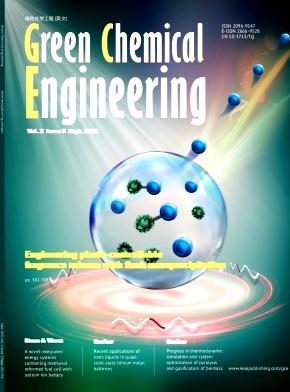Deep learning-based prediction of velocity and temperature distributions in metal foam with hierarchical pore structure
IF 9.1
Q1 ENGINEERING, CHEMICAL
引用次数: 0
Abstract
Constrained by the substantial computational time required for numerical simulation, a deep learning technique is applied to investigate fluid flow and heat transfer processes in metal foam with a hierarchical pore structure. This work adopted a 3D convolutional neural network (CNN) combining U-Net architecture to predict velocity and temperature distributions, alongside corresponding permeability and overall heat transfer coefficient. This approach demonstrates excellent capability in intricate image segmentation. The training sets were acquired by lattice Boltzmann method (LBM) simulations. The CNN model, trained on a substantial amount of data, demonstrates remarkable precision, exhibiting mean relative errors of 0.57% for permeability prediction and 2.27% for overall heat transfer coefficient prediction. Moreover, in CNN prediction, a broader range of structure parameters and boundary conditions beyond those in the training set was used to evaluate the practicability of the trained CNN model. In contrast to numerical simulation, the CNN model economizes approximately 95.41% and 99.57% of computational time for velocity and temperature distribution prediction, respectively, providing a novel approach for exploring transport processes in metal foam with hierarchical pore structure.

基于深度学习的分层孔结构金属泡沫中速度和温度分布预测
由于数值模拟需要大量的计算时间,应用深度学习技术研究了具有分层孔结构的金属泡沫中的流体流动和传热过程。这项工作采用了3D卷积神经网络(CNN)结合U-Net架构来预测速度和温度分布,以及相应的渗透率和总传热系数。该方法在复杂的图像分割中表现出优异的性能。通过晶格玻尔兹曼方法(LBM)模拟获得训练集。CNN模型经过大量数据的训练,显示出显著的精度,渗透率预测的平均相对误差为0.57%,总传热系数预测的平均相对误差为2.27%。此外,在CNN预测中,除了训练集的结构参数和边界条件之外,还使用了更广泛的结构参数和边界条件来评估训练后的CNN模型的实用性。与数值模拟相比,CNN模型在速度和温度分布预测上分别节省了约95.41%和99.57%的计算时间,为探索具有分层孔隙结构的金属泡沫中的输运过程提供了一种新的方法。
本文章由计算机程序翻译,如有差异,请以英文原文为准。
求助全文
约1分钟内获得全文
求助全文
来源期刊

Green Chemical Engineering
Process Chemistry and Technology, Catalysis, Filtration and Separation
CiteScore
11.60
自引率
0.00%
发文量
58
审稿时长
51 days
 求助内容:
求助内容: 应助结果提醒方式:
应助结果提醒方式:


